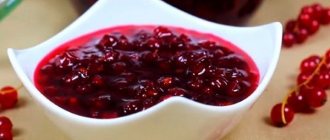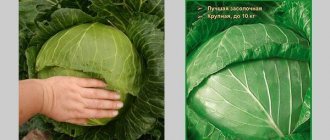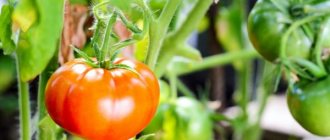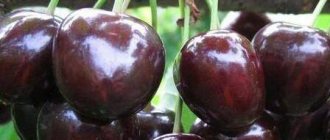Hardworking gardeners grow grapes even in the Moscow region. Thanks to breeders, it was possible to obtain early varieties and hybrid forms that bear fruit in the conditions of the middle zone.
Previously, beautiful grapevines were planted to decorate plots, since the grapes did not have time to ripen. New crop hybrids, provided that all agricultural techniques are followed, make it possible to obtain delicious, aromatic berries suitable for desserts and making homemade wine.
Features of growing grapes in the Moscow region
The climate of the Moscow region differs from the conditions of the southern regions. Therefore, growing grapes has a number of features:
- For planting, early varieties or mid-season varieties (for greenhouses) are selected that manage to ripen in a fairly short summer period;
- varieties with high frost resistance are required;
- It is advisable to plant grapes with light berries, since dark fruits require more sun to accumulate sugar and lasting taste;
- Most varieties require shelter for the winter.
Unlike the south, in the central regions of the country grapes are less affected by dangerous pests. In the conditions of the Moscow region and adjacent territories, the crop is not afraid of many quarantine infections, which greatly simplifies plant care. The fewer chemical treatments, the higher the environmental friendliness of the crop.
Climate of the Moscow region and its features
To choose the right grape variety for cultivation, it is necessary to take into account the peculiarities of the Moscow region climate. There are grapes that will grow well in such conditions, without wasting time and effort.
The first feature of the climate is the long spring. Therefore, common growing schemes may not be suitable. In the Moscow region there is a dry beginning of summer and a rainy second half. Accordingly, you need to make adjustments to watering.
Helpful information!
The advantage of the climate is that there are no insects that can harm grape plantings. There are still no strains of some crop diseases.
In winter there is a lot of snow. Precipitation covers the vine with a dense layer, thereby protecting it from freezing.
Collection of the best grape varieties for the Moscow region and the middle zone
Grape varieties for the Moscow region
When choosing grapes, the characteristic associated with plant cover is conditional. In the south, a certain variety is grown without removal from the trellis, but in the middle zone it does not survive in winter without shelter.
Non-covering and frost-resistant varieties include:
- Shunya;
- Alpha;
- Jupiter;
- Valiant;
- First-Called.
On a note!
In the first two years, young vines must be covered. Further, over the years, the bushes are partially covered, observing the condition of the plants after wintering. The top best grape varieties for the region, according to reviews from winegrowers, include:
- Anniversary of Novocherkassk;
- Beauty of the North (berries have a slightly tart taste);
- Kishmish Radiant;
- Isabel;
- Ruswen;
- Agat Donskoy;
- Crystal.
Each grape on the list has certain advantages. Crystal is suitable for winemaking, as is early Rusven; for making raisins, the best option is seedless Kishmish Radiant.
Among the early ones, we note the grapes Alexander, Aleshenkin, Agat Donskoy. The Queen of Vineyards, Arcadia, Beauty of the Don, and Nadezhda Aksayskaya grow in greenhouses.
Grape pruning
As professionals and amateur gardeners note, if you don’t prune the grapes on time, you won’t be able to expect large bunches. Pruning grapes promotes the proper development of the plant and the formation of berries, providing young shoots with sunlight and fresh air. Pruning, thinning of dense foliage, pinching, dry staking are extremely important for increasing yield and forming a grape bush with a healthy vine.
Dry garter is the main procedure with which you need to start summer grape care. Vines that grew last year should be tied to trellises, thereby setting the direction of growth. In central Russia, it is advisable to do the garter in early June.
The cutting of shoots must be done during the period when the buds are blooming, by removing the barren branches below, at the base of the bush. After tying up the vines, all weak branches should also be broken off.
To ensure an abundant supply of nutrients to the vines and clusters, it is necessary to do the pinching, which is done in the second half of June. To do this, the upper part of the sprouts is cut off, leaving no more than five leaves after the second seedling. It is advisable to make a clothespin when the length of the vine reaches 2.5 meters. If the pinning is not done, the vine will grow up to six meters, causing the grapes to ripen much more slowly and the berries to become less sweet.
To direct the forces of the grapes to the upcoming harvest, pinching should be done. To do this, from the beginning of June to mid-August, you need to remove the emerging leaves of the stepson, and also trim off all the mustache.
In the first half of August it is necessary to mint the shoots. The top of the shoot is cut off to the first leaf, thereby slowing down the growth of branches and promoting better maturation of the crowns.
Three weeks before the start of harvest, it is advisable to thin out the leaves. It is recommended to break off old leaves growing from the bottom of the bush and those that shade the grape clusters. The procedure will ensure good ventilation between the bushes and allow them to receive more light.
The above procedures should only be applied to adult bushes, but not to young ones. Until the age of three, the young bush should grow freely, and summer care for it will consist only of watering, loosening the earthen clod and destroying weeds.
By watching the video instructions, you can learn how to care for grapes in the middle zone, the Moscow region and Siberia.
- How to plant lilies correctly in the fall in the Moscow region and the middle zone
- How to care for grapes in spring
- Caring for strawberries in spring in the Moscow region, Siberia or the Urals
- Planting cherries in the fall in the middle zone: step-by-step instructions
Purchase and price of seedlings in the Moscow region
Various nurseries and farms in the region provide gardeners with seedlings. The assortment includes grapes adapted to the local climate, suitable for cultivation in open-air gardens and in greenhouses. Many nurseries offer exotic grape varieties for those who like to experiment.
Offers:
- Moscow region, Yakhroma, Garden Crafts Center.
- Moscow region, Domodedovo district, Galchino village, Your natural garden.
- Moscow region, Vereya, OPH Bykovo.
- LLC "Nursery "Dobry Sad", Moscow, st. Novaya Basmannaya, 9.
Plant age is 1-2 years. Available: very early and early grapes, technical, table, universal varieties, hybrids, plants with open and closed root systems.
The cost depends on the variety and age of the plant. Typically, a two-year-old grape seedling costs from 400 rubles, the cost of a five-year-old seedling is from two thousand rubles.
The health of grapes and the quality of their fruits
The grapes will be healthier if you immediately cut off all “suspicious” leaves . Any dubious spot, a dried edge of a leaf, a change in its color, etc. should alert you. Grapes, like tomatoes, tend to produce few leaves over time. Remove all deformed, damaged, with the first signs of disease, discolored and shading bunches of berries. By the beginning of autumn, only the youngest and cleanest leaves remain. This is quite enough.
Increased humidity of the soil and air harms the grapes. I water rarely, but abundantly. In winter, the greenhouse goes dry. In November I carry out pre-winter moisture-recharging (moisture-charging) irrigation. To do this, I lay the end of the hose on the outside of the greenhouse. I also saturate the root system of grape bushes growing in the open air with moisture for the winter. I do not direct the stream of water at the root, but rather spill the soil in several places at a distance of about 80 cm from the root collar.
Previously, during severe frosts, I covered all the grapes growing in the greenhouse with thick polyethylene. Then she abandoned this material, replacing it with dense lutrasil. The reason is increased humidity and condensation, which can cause mold and damping off.
I refused to cover the grapes with plastic. Now I only use dense lutrasil
From spring to late autumn I keep the greenhouse doors open. I put a metal mesh at the entrance to block out the neighbors' cats. In winter I regularly remove snow. During thaws I open the windows.
Wasps are very fond of grapes and suck the juice from them. This pest cannot tolerate the smoke of mosquito coils. Even the cheapest ones will do. I leave the smoking coil on all day.
Wasps love Victoria grapes.
I have so far managed to avoid using chemicals, a list of which can be found in any book on viticulture. After autumn pruning, I thoroughly wipe all remaining shoots with a dark solution of potassium permanganate. Then I sprinkle them with wood ash.
Cleanliness is the key to health . This catchphrase should become the winegrower's slogan. No weeds, trash, etc. should not be in the vineyard. A layer of sand at least 20 cm deep is laid on the central path and near the walls of our greenhouse. I add new sand every year. There are no slabs or boards on the path, otherwise there will be slugs under them.
My greenhouse with grapes
All these measures do not exclude accidents. So, one day I discovered a scale insect on the shoot of a grape bush. This pest came from a honeysuckle bush growing nearby. I had to not only clear the scale insects from the grape bush, but also inspect two old honeysuckle bushes.
Among the tools I use in the vineyard is a molar brush . It is needed to clean the bunches of “garbage”. Without this, fallen flowers, extra ovaries, etc. clog the bunch and fall on the leaves. There they grow mold and cause problems. The bunches appear thinned out after cleaning. The free space is soon filled with filling berries. This easy work is necessary to ensure that the grape clusters do not have “peas” and rotten berries.
It is necessary to remove berries with cracked skins before mold appears in them. The photo clearly shows which shoots did not have time to ripen
Working in the vineyard lifts your spirits. This ancient culture fascinates and captivates people, so I want to plant as many different varieties as possible. I do not have the opportunity to expand the vineyard area, so grafting is the only real option to realize my dream.
Planting grapes in the Moscow region
For grapes in the conditions of this region, it is necessary to provide the plants with the most favorable conditions.
Landing dates
They practice spring planting; grapes planted in September-October also performed well. The climate allows any options, but with the condition of complete care. In spring, the earth should warm up to +10 degrees Celsius, preferably so that excess moisture leaves.
For planting use:
- one-year-old seedlings;
- lignified cuttings.
Planting grapes in the fall in the Moscow region is the beginning or middle of October, no later. Healthy annual plants without signs of infection and without defects are suitable.
Selecting a variety and preparing seedlings
You should not plant many varieties of crops at the same time; you need to try how the vines will behave in specific conditions. Not all early grapes are suitable for the Moscow region, since there are varieties with a short growing season that cannot withstand cold weather.
Before planting grapes, deformed roots are removed from the plants and the roots are lowered into a mixture of clay and cow dung. Proportions: 2:1, the consistency of the mash should resemble sour cream.
Selecting landing sites
A prerequisite for obtaining a stable harvest is the correct selection of a place for the vineyard. In open areas, the crop freezes, so ridges protected from the winds are allocated for it, preferably on slopes. South-facing slopes are suitable, although not every estate has such a relief.
The grapes are quite tolerant of soil types, but grow better on sandy loam soils and loam. Acidity indicators are no more than pH 6.8-7; acidic soils are not suitable for plants. The crop grows poorly on clay soil; it is cultivated by adding humus and compost. There should be no groundwater nearby. It is necessary to lay a drainage layer; fragments of brick, expanded clay, and small pebbles are suitable.
Soil preparation
When planting in spring, ridges and holes are prepared in the fall to allow the ground to settle. When planting grapes in the fall, holes are dug 2-3 weeks before work, making sure to add a nutrient mixture.
Contribute:
- 50-70 grams of superphosphate;
- 400-500 grams of wood ash.
The standards are given for 1 sq. meter.
Planting seedlings
The soil in the region warms up to 40-50 cm, so the depth of planting holes should not exceed these values. Compost, ash, and river sand are added to the pits, a bush is placed on the mound and the roots are carefully straightened.
A slight slope to the north is desirable, so it is convenient to bend the vine for wintering. The distance between the pits depends on the grape variety, but in any case - at least one meter. Optimal: 1.2-1.5 meters.
Before planting, install supports for the trellises so as not to disturb the roots of the plants later. After planting, the bushes are watered well and the surface is mulched.
Variety selection
For growing grape varieties in the Moscow region, it is better to choose varieties with early ripening and self-pollinating ones. The harvest on the vine must ripen before frost begins. You should also give preference to varieties that are immune to pathogenic fungi.
Lidia grape variety recommended for cultivation in the Moscow region
Some tips regarding purchasing seedlings:
- It’s better to buy vine samples from gardening farms and nurseries near Moscow - they sell adapted varieties;
- In no case should you take cuttings from your dacha neighbors and friends - it is unknown what their plants are suffering from and what you can bring to your site;
- on sale you can find seedlings supposedly from nurseries in France and Spain, it may well be that they are real, but it is impossible to check under what conditions they were transported and then stored, so it is better not to risk it;
- You should not purchase vines from Ukraine and Moldova - you can infect your plot with local southern parasites and diseases, which will then be difficult to get rid of.
If by chance you have grown a bush with very sour berries on your plot, and it is a pity to uproot it, then you can leave the vine for vertical gardening, and use the berries for culinary purposes - add them to sweet compotes and jam.
Isabella grape variety recommended for cultivation in the Moscow region.
Some grape varieties recommended for cultivation in the Moscow region:
- Victoria - has large clusters (up to 1 kg) with pinkish sweet berries, ripens 4 months after the formation of the ovary.
- Lydia - has good immunity to mildew and oidium, has dark berries with a sour-sweet taste, the clusters are not very large, the harvest can be harvested 5 months after setting.
- Buffalo is an early maturing American hybrid. Gives harvest in early September. The berries have a not very sweet, but pleasant taste.
- Sovering Tiara is a frost-resistant vine that can withstand down to -30 degrees; the berries ripen by mid-August, collected in small clusters of up to 200 g, and have a sweet and sour taste.
- Kudera is a technical variety, characterized by good resistance to cold and unpretentiousness to soil and climatic conditions. An excellent choice for those who make wine at home.
- Jupiter - produces sweet berries with a nutmeg flavor and purple skin, collected in large half-kilogram clusters. The harvest ripens 4 months after the vine blooms. The variety is able to winter without problems in frosts down to -27 degrees.
- Valiant - the vine has a particularly powerful structure and can reach a length of up to 10 m. It produces large and sweet berries that ripen by the beginning of the autumn season.
- Alpha is one of the most popular varieties in the Moscow region due to its unpretentious nature, high yield (up to 10 kg per bush) and frost resistance. Berries with a sweet and sour taste can be used for food and for making wine.
- Isabella is also a very common variety among summer residents near Moscow. Good for making wine. It is tall and needs reliable support. It tolerates severe frosts without problems. In general, growing Isabella grapes in the Moscow region is not much different from cultivating other varieties in open ground.
Grape care
Agricultural technology includes standard activities:
- watering;
- feeding;
- treatment against pests and diseases;
- formation of bushes;
- pruning
Work continues throughout the season, starting in early spring.
Top dressing
Over the entire season, the grapes are fed 3-4 times. The young vine does not require fertilizer, since the seedlings have enough reserves made during planting.
Regular fertilizing begins in the third year, while in spring and early summer the plants are provided with nitrogen, and from the second half of summer - with potassium and phosphorus.
From organics suitable:
- mullein diluted in water (1:10);
- diluted bird droppings (1:20);
- infusions of ash (500 grams per bucket of water).
Mullein and especially bird droppings are added in liquid form, with obligatory observance of proportions. Otherwise, the grape roots will get burned.
Suitable mineral fertilizers include superphosphate, potassium sulfate, and complex fertilizers.
As foliar fertilizers for grapes, boric acid solutions, the Ovary preparation, and superphosphate extract are used.
In autumn, manure is not applied to the crop; only potassium-phosphorus additives are used.
Watering
In the first year, seedlings are watered once a week, taking into account weather conditions and the condition of the plants. Starting from the second year, it will be enough to irrigate the soil abundantly once every two weeks.
Overmoistening of the soil, as well as drought, is not allowed. In hot summers, water as needed using water heated in the sun.
On a note!
When watering, the soil should be saturated with moisture by half a meter.
Spraying
Grapes in the Moscow region are less susceptible to diseases (mildew, oidium) than in the southern regions. But preventive spraying is mandatory.
Solutions of potassium permanganate, Bordeaux mixture, and various fungicides are used.
Approximate processing scheme:
- in early spring before buds open;
- after the bushes bloom;
- a couple of weeks before the berries ripen.
During the period of fruit ripening, all chemical treatments are prohibited.
Video
Planting a grape seedling in summer in the Moscow region
Grapes Autumn planting of grapes
Planting grape seedlings in autumn
Grapes at a dacha in the Moscow region. Victor Shishkin. Grape seedlings. Planting grapes
Planting grapes. The easiest way
When is it necessary to plant grape seedlings? In autumn or spring?
The biggest mistake when planting Vinograd. Grapes for Beginners.
How to plant grapes CORRECTLY. Planting seedlings of grape cuttings, how to plant grapes in the spring.
How and when to plant grapes in the spring - Planting time, Selection of seedlings, Caring for grapes Issue No. 3
Autumn planting of grapes.
I grow GRAPES in the Moscow region. How to form a vine
GRAPES: how to select and plant grape seedlings in the fall
How do you like the article?
Ivanova Tatyana
Ask a Question
Formation of grapes
Due to the climate, experienced winegrowers do not prune young vines in the first year. The grapes must go into winter without pruning in order to withstand the cold season without loss.
They begin to form a bush from the second season. The procedure helps to increase productivity, normalize the load on the shoots, and produce tasty berries. Early varieties are usually highly fruitful and therefore produce a lot of buds. They are removed to avoid overload on the shoot.
The bushes are cut by 2/3 in the fall of the second year, but are guided by the condition of the plant. Remove diseased, weak shoots. Spring pruning also involves removing all frozen branches, diseased, and weak shoots.
To form a vine, determine the following diagram:
- non-covering varieties are formed with a standard;
- covering varieties are formed according to the fan pattern and leaving cordons.
Formation using the Guillot method is practiced in the region:
- in the first season in the fall, two branches are selected and trimmed, leaving 2-3 eyes on them;
- For the second season, the 4 strongest shoots are left, which will be the sleeves of the bush.
At the end of summer, the bushes are minted, cutting off the tops into 4-6 buds. This technique allows plants to better prepare for winter.
Rules for pruning grapevines in the Moscow region and northern regions
In the first year, only two shoots are left. If stepsons have formed on the shoots, they are pinched after the second leaf. In the first ten days of August, be sure to remove the underdeveloped tips of young shoots. At the end of October, after the leaves have fallen, cut both shoots, leaving 3-4 buds on each.
After this, bend it to the ground and cover it with corrugated cardboard for the winter. For the second autumn, you need to select one of the most powerful vines on two shoots, leaving eight buds on the strongest and five buds on the other vine, removing the weak shoots. In the autumn of the third year, one fruit shoot is left on each shoot (the youngest most powerful growth, pruned into 5–8 buds). It is advisable to place fruit shoots at different heights. As a result, a fully grown three-year-old grape bush can contain two fruit shoots.
In the photo: correctly performed pruning of cultivated grapes
The bush is prepared in advance for the first fruiting. The main task is not to overload it with the harvest. During flowering, you need to check the number of bunches, multiplying them by the average weight of the bunches: the total weight should not exceed 4 kg.
Thick, powerful shoots with many fruit shoots should be avoided, since they break when covered. It is necessary to increase the strength of the bush by increasing the fruit shoots to three on one shoot, while simultaneously increasing the number of shoots extending from the root.
Preparing for winter
In the conditions of the Moscow region, you should not take risks and experiment with planting a heat-loving crop. The grapes, especially in the first two or three years, are covered all over.
The vine is prepared for wintering by removing it from its supports and bending it to the ground. Laying branches on the ground is not allowed, as this often causes mold. Wooden slats are laid at the bottom of the groove or trench and only then grape branches are laid.
Shelter options:
- spruce branches;
- covering the vines with soil (ineffective);
- film (first install the arcs, then lay the film);
- roofing felt;
- slate sheets;
- wooden boxes (used for several seasons).
In recent years, gardeners have been using special agrofibres, covering the vines with material and pressing down the edges with boards or bricks. Snow will be a reliable shelter from above.
Sheltering the grapevine for the winter
Covering grapes with frost resistance of -22...-28 °C, the roots of which are not sufficiently resistant to soil freezing in harsh and snowless winters
The recesses around the trunk of the seedling are covered with earth, then insulated with a 5-6 cm layer of sawdust (a bucket per bush). The remaining vines after pruning are tied into a bundle and pinned to the ground. The top of the bunch and the ground around the bush are covered with corrugated cardboard from container boxes, the edges of the cardboard are sprinkled with earth or sawdust. In severe winters without snow, the slopes of the ridges are insulated with corrugated cardboard. The shelter is removed after the snow melts. A warmer shelter leads to damping off of the buds and a decrease in yield, since in Russian grapes the formation of fruit buds is completed after the vines freeze.
Conditionally covering grapes with frost resistance -29…-33 °C
Similar, only the vines are not covered with corrugated cardboard, but pinned to the ground.
In the photo: Amur grapes in autumn
Uncovered grapes with frost resistance -34…-45 °C
They only fill the holes around the bush. The vines are not removed from the support.
"Smolensk Ridge". Such a simple technique as increasing the drainage grooves by 10–15 cm allows the soil in the root layer to quickly warm up in the spring and cool down in the fall, thereby increasing the sugar content of northern varieties by up to 30% and shortening the growing season by at least 30 days.
Technology of planting grapes on ridges fueled with biofuel As a result, with this technology, grapes in the Non-Black Earth Region ripen a month earlier than in similar northern regions with conventional planting.
Removing cover in spring
When warm days arrive, snow is removed from the shelter and grooves are made to drain melt water. Dampness is not allowed to get inside the shelters.
Open the protection gradually, thoroughly drying all the moisture inside it in the sun. It is advisable to open the vine during the day and cover it at night. The protection is completely removed only when stable heat sets in.
In the Moscow region there is a high risk of return frosts, so weather forecasts are taken into account and bushes are tied to trellises only when the heat is stable.
Landing dates
It is preferable to plant grapes in the Moscow region in early spring or autumn, before frost sets in. In spring, you can plant green annual seedlings or woody cuttings. Annual seedlings must be planted very carefully, since the roots of the plant are very fragile at this time. When removing them from the container, they need to be carefully untangled and straightened.
Rooted cuttings are planted after the soil has warmed up at a planting depth of up to +10 degrees. You cannot delay planting: seedlings develop slowly at a later stage.
In autumn, annual grape seedlings are mainly planted. Autumn planting in the Moscow region is optimally done in mid-October. It needs to be completed before frost sets in.
Harvesting
The grape harvest in the region occurs at the end of summer or the first ten days of September. If the weather permits, the clusters are left on the bushes to fully ripen.
You should not overcook the berries, otherwise the harvest will deteriorate and the taste will deteriorate. Modern hybrid forms of early grapes are characterized by high transportability and good keeping quality. When conditions are created, brushes are stored in the basement for up to several months. But mostly the berries are consumed fresh and processed (juices, compotes, homemade wine, liqueurs).
Harvest and storage
Most of the grape varieties planted in the Moscow region bear fruit before the beginning of autumn. Some of them fully ripen within one month, and it is important to collect the bunches within a clearly defined period. Overripe specimens are not suitable for making wine, and their taste is not so bright and rich. Berry picking is done by hand. The clusters are trimmed using hand pruners, being careful not to crush the fruits themselves. Defective berries always rot quickly, eventually destroying the entire bunch. It is important not to put spoiled harvests in the same box as high-quality ones.
Successful cultivation of heat-loving grapes in the Moscow region is indeed possible, and this does not always require a greenhouse shelter. By choosing the right variety and observing all the requirements for agricultural technology for growing it, even a novice gardener will be able to get a worthy result of his labors.
Reviews from gardeners
Maria, Zaraisky district, Moscow region
I have long wanted to grow grapes, and for almost seven years now the Crystal variety has been making me happy. Very pleased: unpretentious, ripens early. The berries are oval, not particularly large, and ripen in August. For the winter, I first prune the vine, remove it from its support, bend it down, and sprinkle it with leaves. Winters well. We make wine from the berries; when fresh they are slightly sour.
Ivan, Dmitrov
Isabella and Lydia are growing well in our region, I’ve been convinced of this for several years now. The varieties are hard workers, I don’t cover them with anything, they always produce a harvest. Two years ago I collected almost 50 kg of berries from two vines. Afterwards - a little less, but still we will not be overjoyed. I bought the seedlings from a nursery, grew them without tassels for two years, and cut off the signals.
How to choose a variety that is suitable for the soil
For beginning gardeners, it is worth remembering that even for non-covering varieties, the vine must be covered for the first two years. In the third year, this is done partially to check the degree of frost resistance.
According to ripening time
The best options for the Moscow region will be early grape varieties, i.e., the ripening period of which lasts up to 115 days. The most popular among them:
| Name | Advantages | Flaws |
| Aleshenkin |
|
|
| Victoria |
|
|
| Jupiter |
| |
| Sovering Tiara |
|
|
| Valiant |
|
|











